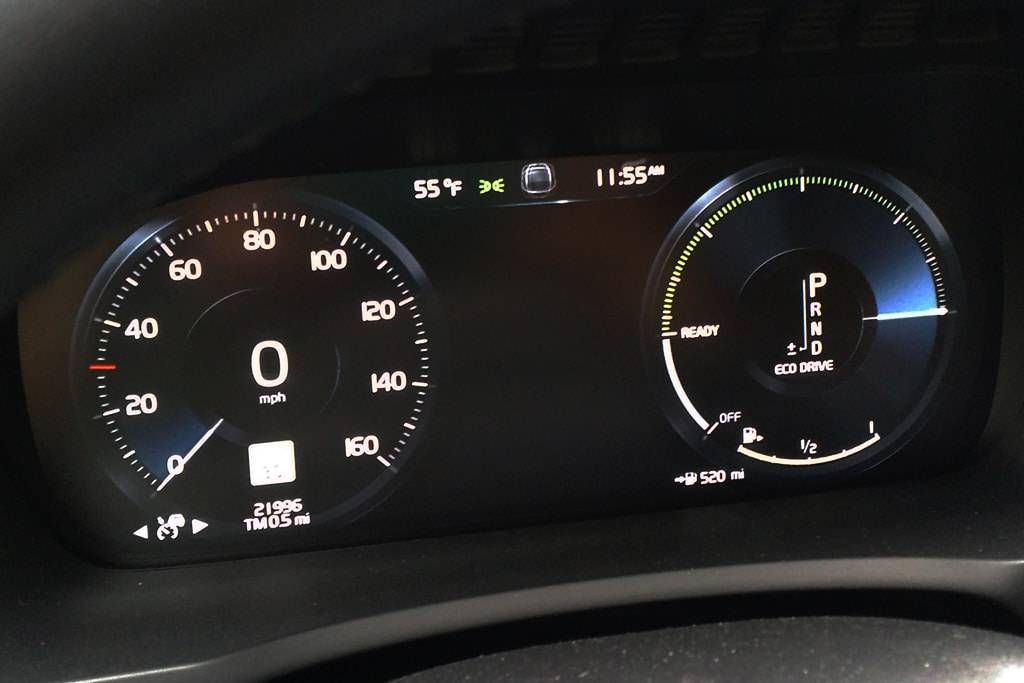Can We Boost the Volvo XC90's Fuel Economy?


CARS.COM — It’s not surprising that large SUVs don’t get great fuel economy. Their engine size and hefty weight limit their efficiency, but we expected results from our long-term 2016 Volvo XC90 — its small but potent supercharged and turbocharged 2.0-liter four-cylinder engine is EPA rated at 20/25/22 mpg city/highway/combined. After 20,000 miles in a mix of highway and city driving, we’re only averaging 20.7 mpg, short of the combined rating. Can’t it do better? As it turns out, yes, but be ready to make a trade-off.
Related: Follow Our Long-Term Fleet
The XC90 is equipped with an Eco mode that Volvo claims boosts the SUV’s efficiency. In Eco mode, the suspension is lowered to reduce wind resistance, the auto stop-start system is automatically engaged so the car shuts down at red lights and stop signs, and the air conditioning is reduced to save energy. Most noticeably, the SUV is much less responsive in terms of acceleration. I took the XC90 from Chicago to St. Louis and back to test it.

On the way to St. Louis, I drove 303 miles in Eco mode with an average speed of 63 mph and returned mileage of 23.7 mpg. On the way back to Chicago, I kept the XC90 in regular Comfort mode during the 309-mile trip. With an average speed of 61 mph, my mileage was 22.8 mpg. It’s better than our staff is averaging but not quite good enough to beat the best mileage we’ve seen so far on a single tank of fuel: 24.8 mpg.
To engage Eco mode, push down on the silver wheel near the gear selector. Spin it through the drive mode menu, then push down on Eco mode to select it. Note that the default mode is Comfort, so each time you restart the car, you must re-select Eco from the menu.

Once engaged, the gauges take on a green hue and the one to the right becomes an energy monitor, with a pointer that highlights the green zone when you’re driving most efficiently. It’s also obvious because the XC90 is much more sluggish from a stop; accelerator responsiveness is lethargic, something that made passing and merging a challenge — and annoyance — on my highway trip. I also found the auto stop-start system irritating; it lacks the smoothness of other systems I’ve tested and shudders in a very un-luxury-car-like way. Lastly, climate output is also notably reduced; the air conditioning felt like it was phoning it in.
I saved almost 1 mpg on my trip in Eco mode, but are the performance and climate losses worth it? Gas is still cheap, which will likely have a big effect on your answer.


News Editor Jennifer Geiger joined the automotive industry in 2003, much to the delight of her Corvette-obsessed dad. Jennifer is an expert reviewer, certified car-seat technician and mom of three. She wears a lot of hats — many of them while driving a minivan.
Featured stories




